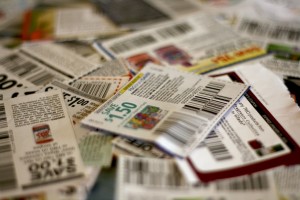The retail industry is facing major shifts and changes as mobile devices get smarter and consumers incorporate them further into their daily lives. From shopping to seeking out product information, consumers turn to their smartphones and other mobile devices more than ever. However, there are still some traditional holdouts in the retail environment. One of those holdouts, according to a report from RetailMeNot and Placed, is the coupon.
But today’s coupon usage looks very different from how it looked in the past when coupon clipping and printed circulars were commonplace. Today, more than 42% of consumers use mobile apps to find coupons, while about 35% use print media, according to the report. The report touched on some overall points that have also shown up in SmartBrief’s coverage of the food retail, consumer packaged goods and restaurant industries. We took a look at the report and broke down some of those points that have been covered throughout our newsletters over the past weeks:
Mobile apps are the most common place for consumers to search for coupons
According to the report, 59% of consumers use digital channels when looking for coupons, and 42% use mobile apps. “The world of digital provides shoppers with even more tools to find discounts,” the report said. “And thanks to mobile, consumers can navigate the digital coupon repository with ease.” Retailers, brands and restaurants alike are taking notice and ramping up their mobile efforts:
- Study: Grocery shopping app usage is on the rise
- Starbucks rolls out revamped mobile app
- Baskin-Robbins experiments with mobile app
- Albertsons integrates Safeway’s personalized coupon app
Coupon users are becoming increasingly omnichannel
The report found that, while coupon usage is still more common while shopping in physical stores, coupon usage during online shopping is catching up. Specifically, 70% of consumers use coupons during their trips to brick-and-mortar stores and 51% use coupons while shopping online. “With an omnichannel retail trend expected to only grow over the next few years, the most successful retail marketers will be the ones who employ mobile digital coupons as a major tactic, along with paper coupon distribution, to complete the consumer’s purchase,” the report said. Omnichannel is a very common word found in SmartBrief’s coverage of the retail, CPG and restaurant industries, with companies looking to engage with shoppers across all channels:
- How Coffee-mate combined online and offline interactions
- Big pizza chains aim to stay first in food delivery
- Harris Teeter, Uber team up on grocery delivery in DC
- Broulim’s finds success linking loyalty program, e-commerce
Providing consumers with engaging content is key
Another of the report’s findings was that nearly three-quarters of consumers have at most two shopping apps on their phones. This stresses the importance of creating engaging content for consumers to interact with across both physical and digital channels. “[B]y creating an app that is convenient, fast and delivers a personalized experience, retailers can constantly iterate and innovate to not only prompt initial downloads but also keep consumers from removing or replacing their apps. What will drive long-term app usage and return visits is utility and relevancy for the shopper’s omnichannel experience,” the report said. Food companies’ efforts toward engaging shoppers with mobile, social and other types of content are constant and change along with shopper habits:
- PepsiCo launches in-house content studio
- How coca-cola is innovating with mobile
- Why Dunkin’ Brands provides value, not frills
- Gatorade joins growing list of brands marketing with messaging apps
__________________________________________________
If you enjoyed this article, join SmartBrief’s email list for more stories about the food and beverage industry. We offer 14 newsletters covering the industry from restaurants to food manufacturing.
